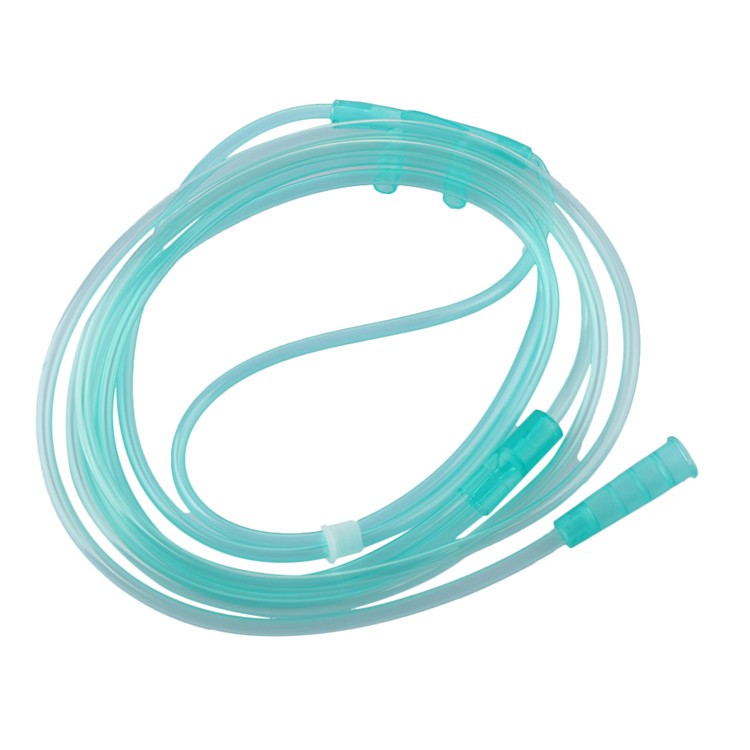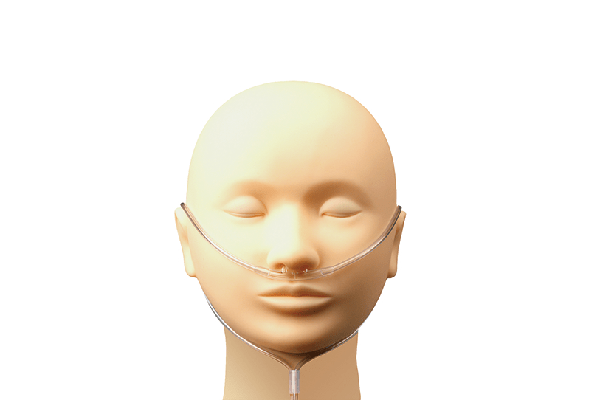In this comprehensive guide, we’ll delve into the world of nasal cannulas, exploring their function, the importance of flow rate, and alternatives like the face mask. This article is designed to give you a clear understanding of how nasal cannulas work, their role in oxygen therapy, and how to optimize their use for patient care. Whether you’re a medical professional, a patient, or simply someone seeking knowledge, this guide will equip you with valuable insights into the effective and safe use of nasal oxygen delivery systems. We’ll cover the basics, compare different types, and highlight key considerations for optimal oxygen delivery.
What is a Nasal Cannula, and Why is it Used in Oxygen Therapy?
A nasal cannula is a medical device used to deliver oxygen to a patient. This cannula is a medical device that is a simple, yet effective, method of providing supplemental oxygen. It consists of a lightweight tube which splits into two prongs, these two prongs are placed in the patient’s nostrils, and tubing connects to an oxygen source, such as an oxygen tank or oxygen concentrator. The primary purpose of a nasal cannula is to deliver oxygen to patients who need supplemental oxygen to maintain adequate oxygen levels. This is a common form of oxygen therapy and is often used for those with respiratory conditions, like COPD, pneumonia, or during post-surgery recovery. It is a crucial tool in healthcare for oxygen delivery.
Oxygen therapy with a nasal cannula helps patients get the oxygen they need. When a patient’s oxygen levels are low, a nasal cannula helps by increasing the amount of oxygen they breathe in. The nasal cannula is typically placed with the two prongs inserting into the nasal passages, this design allows for a continuous flow of oxygen. The flow rate determines the amount of oxygen that is being delivered to the patient. The cannula is a medical tool used to deliver oxygen to patients that cannot get enough oxygen through regular breathing.

What are the Benefits of Using a Nasal Cannulas for Oxygen Delivery?
There are several benefits of nasal cannulas, making them a preferred choice for many patients. One of the primary advantages is their ease of use and comfort. Cannulas are easy to apply and are generally well-tolerated by patients due to the minimal obstruction of the nasal passages. This makes them suitable for prolonged use, even at home oxygen settings. Unlike a face mask, a nasal cannula allows the patient to eat, drink, and speak more freely, which can improve their quality of life.
The nasal cannula’s design also promotes patient mobility. Because they are lightweight and connect to portable oxygen systems, patients can move around more freely, and can use oxygen more easily. Many patients use nasal cannulas at home oxygen setups. Moreover, nasal cannulas deliver low flow oxygen to deliver oxygen without causing significant discomfort, making them ideal for patients who only need supplemental oxygen. Due to these advantages, nasal cannulas are used frequently across a wide range of medical settings.
Another advantage of nasal cannulas is that they allow for variable flow rates of oxygen. This flexibility means that the oxygen delivery can be customized to meet the individual patient’s needs, and oxygen levels. For patients who have a need of supplemental oxygen, nasal cannulas make daily living much easier.
How Does a Nasal Cannula Work: Understanding the Components and Functionality
A nasal cannula is a straightforward oxygen delivery system that efficiently deliver oxygen to patients. The cannula is a medical device consisting of several key components that work together. The main parts are the tubing, the prongs, and the connection to an oxygen source. The tubing is a flexible tube that carries the oxygen from the oxygen source to the patient. The prongs, usually made of soft plastic, are inserted into the patient’s nostrils. The prongs are the portion of the nasal cannula that directly deliver oxygen.
The functionality of a nasal cannula is based on a simple principle: oxygen flows through the tubing and is delivered into the nasal passages through the prongs. The oxygen source can be a wall outlet connected to a central oxygen supply in a hospital, an oxygen tank, or a home oxygen concentrator. The oxygen then mixes with the air the patient is breathing, enriching the inspired air with additional oxygen. The flow rate can be adjusted on the oxygen source to control the amount of oxygen being delivered. The flow of oxygen from the oxygen source is measured in liters per minute (LPM), this measurement allows medical professionals to accurately deliver oxygen.

What is a Safe Flow Rate?
Determining the safe flow rate is a crucial aspect of nasal cannula usage. The appropriate flow rate depends on the patient’s specific needs and oxygen levels. Generally, low flow nasal cannulas are used for flow rates ranging from 1 to 6 liters of oxygen per minute (LPM). This flow rate is typically considered safe for most patients and is a common practice. The amount of oxygen being delivered is determined by the flow rate.
It’s important to note that higher flow rates are not always better. Flow rates over 6 LPM are not commonly used with standard nasal cannulas, as they may not increase the oxygen concentration significantly and can lead to nasal dryness and discomfort. At flow rates that are high, patients can also experience nasal dryness or irritation as the oxygen dries out the nasal passages. Monitoring the patient for signs of distress and regularly assessing their oxygen levels is essential to ensure the flow rate is appropriate.
The flow rate of 4-6 liters of oxygen per minute is a frequently utilized setting, especially for those patients who require moderate oxygen support. However, this is just a general guideline and may be adjusted. Medical professionals must carefully consider the patient’s condition when assessing oxygen flow rates.
What are the Different Types of Nasal Cannulas?
While the basic design of a nasal cannula remains the same, there are several different types available to suit different patient needs and preferences. The most common type is the standard nasal cannula, which is the simple nasal cannula that connects to an oxygen source.
Another type is the flared nasal cannula. The flared nasal is designed for comfort, and it provides oxygen in a slightly different way. The flared nasal cannula is a bit more robust than the standard nasal cannula. This design aims to provide a better fit.
For patients needing high flow oxygen, high flow nasal cannula may be needed. This is a high flow oxygen delivery system. The high flow nasal cannula is often used in hospitals. The high flow nasal cannula delivers the oxygen at a very high flow rate. The high flow nasal cannula can deliver oxygen at flow rates of up to 60 liters of oxygen per minute.
When is a High Flow Nasal Cannula Necessary?
A high flow nasal cannula is employed in specific medical situations where patients need a significant amount of oxygen and respiratory support. This is a high-flow nasal cannula that is necessary for patients with conditions like acute respiratory distress syndrome (ARDS) or severe pneumonia. This high-flow nasal cannula can deliver oxygen that is much greater than the low flow rate.
A high-flow nasal cannula can also deliver oxygen with higher flow rates of oxygen, the high-flow nasal is a medical device that delivers oxygen at higher flow rates. It is able to deliver oxygen at flow rates that are considerably greater than a standard nasal cannula. The ability to deliver oxygen at a flow rate of up to 60 liters of oxygen per minute makes this cannula is a medical device that can provide a great deal of support. The higher flow rate is made possible because the cannula is a medical device that can provide support to get more oxygen.
A high flow oxygen delivery device also helps with the respiratory process itself. With these flow rates of oxygen, the patient’s breathing becomes more efficient. This provides a more comfortable and effective form of oxygen therapy for the patient, allowing them to get enough oxygen.

How to Use a Nasal Cannula Correctly: Tips for Optimal Oxygen Delivery
Correct usage is key to maximizing the effectiveness of a nasal cannula. Here are some tips to ensure optimal oxygen delivery and patient comfort:
- Proper Placement: Ensure the prongs are correctly inserted into the patient’s nostrils, without being forced. The two prongs should sit comfortably. The nasal prongs need to be positioned correctly in the patient’s nose.
- Secure Tubing: The tubing should be secured to prevent kinking or accidental disconnections from the oxygen source.
- Regular Monitoring: Regularly check the patient’s oxygen levels, as well as the flow rate setting, ensuring it remains appropriate.
- Patient Comfort: Address any nasal dryness or irritation by providing humidification.
- Hygiene: Keep the nasal cannula and tubing clean to minimize the risk of infection.
- Oxygen Source: Always ensure the oxygen source is functioning correctly and has an adequate oxygen supply.
- Equipment Maintenance: Make sure the oxygen equipment is well maintained.
Are There Risks and Side Effects Associated with Nasal Cannulas?
While nasal cannulas are generally safe, there are some potential risks and side effects to be aware of. The most common side effect is nasal dryness, which can be addressed with humidification. Prolonged use of high flow rates of oxygen can lead to nasal dryness or irritation. Nasal dryness can lead to discomfort and, in some cases, nosebleeds.
Another risk is oxygen toxicity, especially with prolonged exposure to high oxygen concentrations. It is important to monitor the patient’s oxygen levels and adjust the oxygen flow setting as needed.
What are the Alternatives to Nasal Cannulas?
There are several face mask alternatives to nasal cannulas, each with its own advantages and disadvantages. Face masks offer higher oxygen concentrations than standard nasal cannulas, making them a suitable option for patients who need a higher amount of oxygen. However, face masks can be less comfortable for long-term use.
Other alternatives include high-flow nasal systems and non-rebreather masks, each designed for specific clinical needs. The choice of oxygen delivery device should be based on the patient’s needs, their ability to tolerate the device, and the desired oxygen concentration and flow rate.
Choosing the Right Nasal Cannula: Key Considerations for Patients and Professionals
Selecting the appropriate nasal cannula involves careful consideration of several factors. The patient’s oxygen needs are a primary consideration. The severity of their respiratory condition and the desired oxygen concentration will influence the choice between a nasal cannula and an alternative such as a face mask.
Patient comfort and tolerance are also crucial. Some patients may find nasal cannulas more comfortable than face masks, especially for long-term use. The ability to eat, drink, and speak freely is an added advantage of nasal cannulas. Nasal dryness or irritation are common side effects, so ensure that steps can be taken to keep the nasal passages moist.
Flow rates of oxygen are another key consideration. The flow rate should be adjusted to maintain the patient’s desired oxygen levels.
Nasal cannulas are essential medical devices in the healthcare setting. At Medicalzx, we understand the significance of high-quality medical supplies. Our nasal cannulas are manufactured to the highest standards. We are a trusted medical device manufacturer, and our products meet the stringent requirements of hospitals, clinics, and other healthcare providers.
Medicalzx provides a range of nasal cannulas designed to meet various patient needs. We are a factory with 7 production lines that produce medical grade supplies. Our products are designed to ensure patient comfort and the effectiveness of oxygen therapy. We offer a commitment to quality, compliance, and customer satisfaction. We aim to provide reliable and high-performing medical device products. We serve USA, North America, Europe, Australia, and other regions with our commitment to quality. We provide reliable supplies to improve patient outcomes. Learn more about our medical gauze products.
Summary of Key Takeaways
- Nasal cannulas are a common method for oxygen therapy, delivering supplemental oxygen directly into the nostrils.
- Flow rate is critical; it determines the amount of oxygen delivered.
- The advantages of using a nasal cannula include ease of use, comfort, and patient mobility.
- Monitor patients for potential side effects like nasal dryness and adjust the oxygen flow accordingly.
- The best choice of oxygen delivery system depends on the patient’s specific needs and comfort.
Post time: 2月-07-2025





